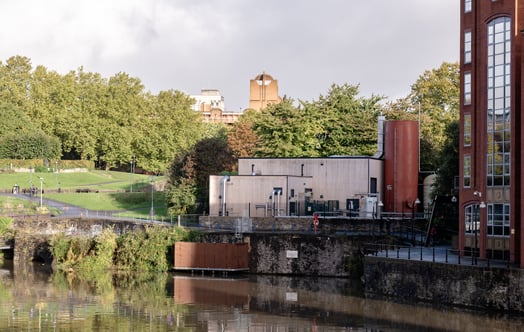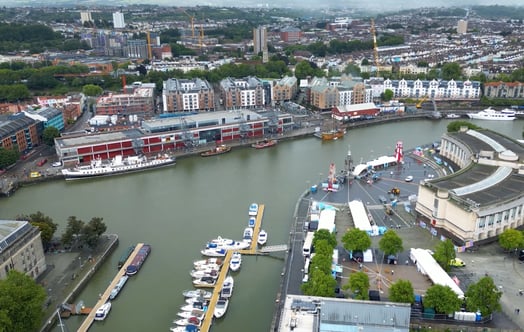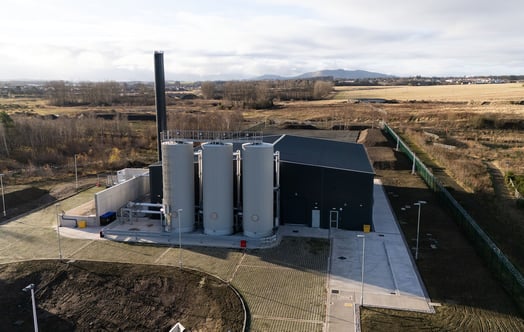How regulatory reform could drive Bristol's low carbon future
As a cornerstone to the UK’s transition to net zero, the Government’s Warm Homes Plan is a signal of intent. With £13.2 billion committed during this Parliament, it lays important groundwork for a just transition to a low carbon future – but much of the detail is still to come.
The Warm Homes plan is due to be published this autumn but we understand the that the core objectives are to:
- Reduce fuel poverty by making homes warmer and cheaper to run
- Upgrade energy efficiency in millions of homes
- Support low-income and vulnerable households with targeted financial support
- Accelerate decarbonisation of domestic heating systems (including through connection to low carbon heat networks)
If delivered effectively, relative to the UK’s heat network sector, the Warm Homes Plan could provide a focus on reducing costs for the consumer, enabling heat networks connections and policy alignment, strengthening our ability to deliver on our vision for the Bristol heat network, which targets half of all Bristolians living, working, and learning in the city to benefit from low carbon heat by 2050*.
To find out more about heat network regulation and what's coming up, read our latest blog here.
Scaling Bristol’s heat network – what we hope regulation will unlock
The Bristol heat network already serves the equivalent of 11,500 homes across Redcliffe, Old Market, Bedminster and Temple. Through the delivery of the Warm Homes Plan, there is potential for significant network growth, whilst continuing to ensure customer protection and care.
There are a some barriers that customers face when seeking a low carbon heating solution. We contine to work with Government to reduce and remove these barriers and bring about low carbon heat network growth both in Bristol and across the UK.
If set with the right ambition, the Warm Homes Plan can help deliver on this vision by:
- Unlocking connection opportunities in existing buildings through targeted local funding – replicating more projects like connecting Hannah Moore Primary School, a 120 year Victorian building, that now benefits from a 40% reduction in carbon emissions.
- Creating opportunity for developers and investors by aligning available funding with incoming national policy for heat networks – reinforcing Bristol’s market attractiveness through demonstrating green credentials and attracting investment that supports regeneration schemes like Bristol Temple Quarter, which will be heated by the Bristol heat network.
- Enabling deeper policy alignment with local housing strategies, including Bristol City Council’s own climate action plan on heat and buildings – through Bristol City Leap, (the public private partnership created to accelerate investment into low carbon energy infrastructure), Bristol City Council provides the conditions for network expansion through localised building regulations that support a connection to the Bristol heat network. The information we have about the Warm Homes Plans appears to provide supportive funding to help fulfil the council’s objectives.
With national policy now catching up with local ambition, Vattenfall will continue to support developers, property investors and the community, building confidence to choose heat networks within the regulatory landscape that is continually developing.
About the Warm Homes Plan – a national plan with local impact
The Warm Homes Plan commits crucial funding during the next parliamentary term and promises to provide a significant investment in low carbon heat networks as part of long-term decarbonisation.This closely aligns with the Energy Act 2023, which introduced a regulatory framework for heat networks (the first measures of which came into force in April 2025, with consumer advocacy bodies and the next tranche beginning come into force in January 2026 as Ofgem regulation begins).
If implemented as expected, it could help remove financial barriers, assisting and accelerating growth in the heat network sector, supporting our goal of delivering city-scale, low carbon heating systems in Bristol, London, Scotland and beyond.
The Warm Homes Plan is being designed to tackle fuel poverty, reduce carbon emissions and stimulate sustainable growth. We expect this to include:
- Additional investment in low carbon heat infrastructure compared to previous plans
- New rounds of funding, including the Heat Network Efficiency Scheme (HNES) and the Green Heat Network Fund
- Warm Homes Local grants and Social Housing Funds
These measures would directly support the expansion of heat networks, especially in cities like Bristol, where dense urban environments make heat networks a competitive solution on both cost and carbon.
How we’re creating conditions for heat network success in Bristol
To deliver our 2050 vision for the Bristol heat network, there are three pillars which will create conditions for success:
- Integration - connecting buildings, communities and energy sources into one unified system, whilst creating new jobs, supporting local suppliers and encouraging skill development through social value.
- Decarbonisation - phasing out fossil fuels and transitioning to low carbon heat sources through the development of new permanent low carbon energy centres like air source and water source heat pumps.
- Cost competitive - ensuring fair pricing and long-term value for customers, including the publication of our tariffs on the Bristol City Leap website.
Access to Government support has been a critical enabler for the Bristol heat network. Support through the Heat Network Efficiency Scheme has allowed the Bristol heat network to improve operational infrastructure in the Redcliffe area. In addition, support from the Green Heat Network Fund (GHNF) rounds have supported investment into Bristol heat network across Bedminster, Frome and Temple networks. Continued access to these support mechanism remains a vital part of transforming energy infrastructure at scale.
Whilst expanding infrastructure, we hope to widen opportunity for community participation. In Bristol, Vattenfall is able to facilitate and fund community energy projects that support local community led heat generation and heat connection projects to the Bristol heat network. Guidance for community groups can be found here.
Whilst the concept of a heat network acting as an anchor to support small, community schemes is new, there are active applicants in Bristol who are exploring how they can participate, either to supply excess heat to the city network or be connected as a customer that is served by the network. Watch the case study on local organisation, Windmill Hill City Farm here.
These initiatives create a supportive ecosystem for heat network growth, one that aligns policy, investment and local ambition. To learn more about the Bristol heat network and our vision for 2050, visit Bristol 2050 Vision.
*The Bristol vision estimate is based on projected connections to the Bristol heat network by 2050, including homes, workplaces, schools and healthcare buildings. By combining forecasts of connected floorspace with typical household sizes and space use in offices and schools, we’ve estimated how many Bristolians could benefit from low carbon heat, assuming full uptake of connections.




